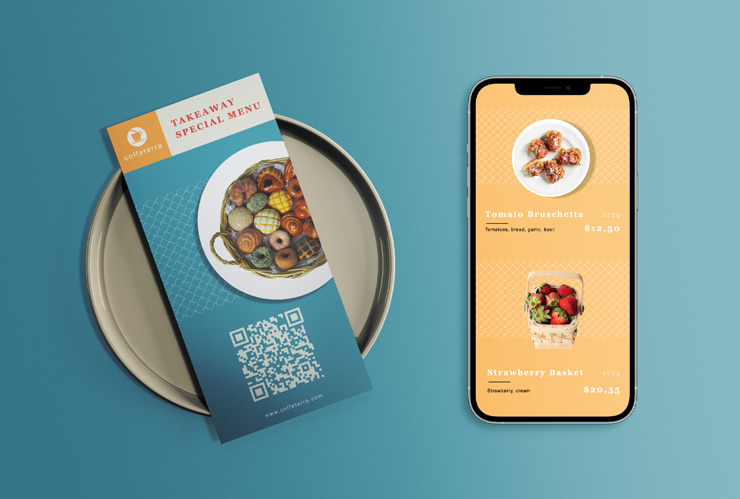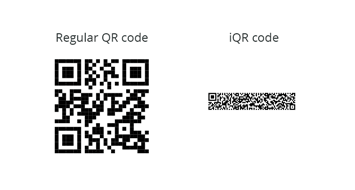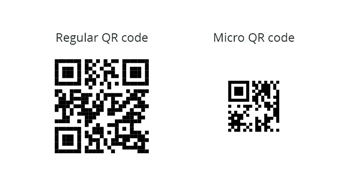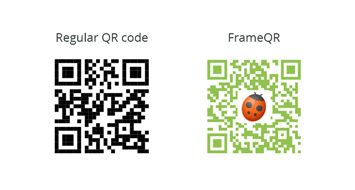Introduction Guide: What Is a QR Code?
QR refers to Quick Response Code and can be found literally anywhere. One proof of their usability, prevalence and popularity is the fact that the majority of modern mobile gadgets and applications include a built-in QR code scanner. They greatly resemble barcodes and can be either numeric or alphanumeric. Particular QR code types may even include entire images.
What does this technology offer to mass-market/niche brands and average users?

Static vs. Dynamic QR Code
First invented in Japan, QR codes are now known around the globe and are applied in numerous industries. Although their visual content may differ from a standard barcode’s appearance, the main purpose is the same—to store important statements and make them accessible through machine-reading gadgets. The data preserved in such a way is truly divergent—from phone numbers to physical addresses and even simple texts.
There are two major categories of QR codes: static and dynamic. There is one huge difference between these labels, namely, their adjustability.
If you are looking for a more versatile solution, then dynamic versions are the right choice. Distinguished by a modifiable destination URL, the content that was originally inserted in the code can be updated later without the need to change the figure’s composition. It doesn’t matter whether this project is already printed out or is present in its digital form only; enthusiasts are welcome to change its content anywhere and an unlimited number of times.
In turn, a static QR code can’t be corrected that easily. Since its destination URL is stable, the encoded content is preserved in the graphic form directly. If any alterations are required, the visual format must be changed as well. Besides, static models look more distinguished and multicomponent than their dynamic substitutions.
The Best Use Scenarios for Static QR Codes
It may seem that codes with fixed data aren’t sought after, but they will serve best in the right circumstances. The power of static QR layouts shouldn’t be underestimated in such cases as:
- Personal information—without a doubt, sharing this type of sensitive data requires several protection measures. These barcodes work great in avoiding any risks of the important information being altered.
- One-time use situations—dynamic codes are a bit more complicated in creation. So, if the use case is temporary, you are welcome to create their static options. Some facts turn out to be obsolete and don’t require any modification upon the inquiry. For instance, such codes serve well for special marketing campaigns.
- Sensitive data—access codes, company names, employee numbers are just some samples of information that don’t usually require any updates. Static QR codes will offer more security since there is no option for editing.
What is more, there is no expiration date for static QR layouts. If they are printed out and damaged, that may be the only reason for them to become unscannable.
What Are Dynamic QR Codes Used For?
As you already know, dynamic options are lifesavers for institutions that require updating their information regularly. There is a vast variety of exclusive and all-inclusive samples, but here are the leading ones among them:
- Cafe or restaurant menus—the opportunity to access large volumes of information just with the help of simple scanning allows service providers to make their deals safer and reduce the amount of contact among different parties (which is especially important, taking into account how the current worldwide situation has influenced and is still changing the way organizations do their business). Instead of rebuilding a label when one price position should be updated, why not benefit from the appliance of dynamic QR codes?
- Personalization—since dynamic codes allow modifications of the URL it is connected to, the information stored within their framework can be easily personalized. For example, that will work for shipping services or flexibility of options (redirection to different catalogs in dependence on the time of the day, customers’ interests, previous purchases, etc.).
- Tracking matters—if you are interested in monitoring the scanning metrics, this statistics approach is available only in the case of dynamic barcodes. For businesses, it is one of the essential tools for manipulating the conversion degree and letting it increase.
Contactless payments, checking reservations, remote ordering and purchasing, as well as numerous services in the field of healthcare and even libraries, are all spheres in which dynamic QR codes prove beneficial.
QR Code Types
The field of appliances influences the purpose and visual quality of QR codes. That’s why it is important to check which types will suit your particular objective. The more knowledge you achieve, the more flexible and versatile your projects can turn out to be.
One of the categorizations uses the QR code capability to store numerals. While the first model allows maintaining over 1,000 numerals, the alternative model 2 in its largest type will save over 7,000 numerals for you. Overall, the collection of QR codes includes the following kinds:
-
iQR code—this type differentiates with its capability to store about 40,000 numerals in its largest module composition. It can be presented in a rectangular or square format.

-
Micro—if you take a closer look at standard product packaging, the probability you are going to find a micro QR code is almost absolute. It is the best solution to apply for small surfaces since it is available in only one orientation.

-
FrameQR—what differentiates this version from a standard layout is the presence of a special frame zone. The latter is beloved by brands since it allows the addition of extra images or text messages. This type is commonly used in marketing and promotional campaigns.
